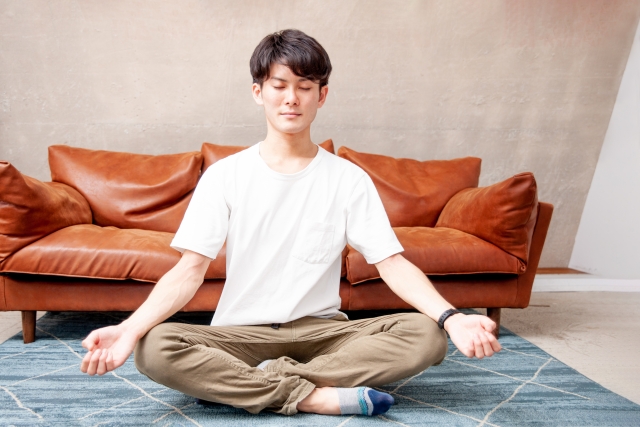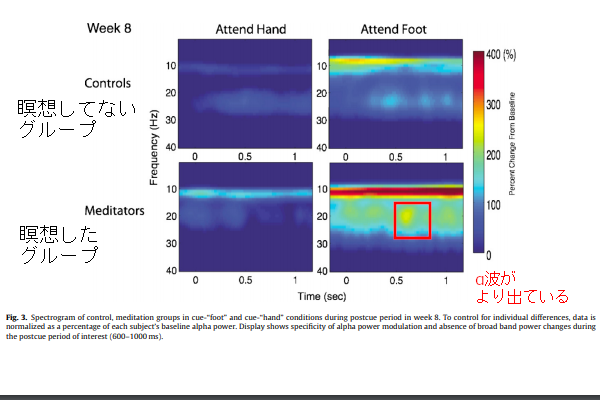Consciousness in the here and now! The state of not being is stressful.

Focusing on the present moment decreases mental fatigue and quells brain chatter. Brain chatter is the brain being in an active state. Why is it active?
In today’s society, the types of fatigue have changed compared to not so long ago. Of course, it depends on the type of work and the environment, but a decade ago, fatigue was physical fatigue. Today, however, the proportion of mental fatigue has increased. This is what we call stress.
We think back on past failures, what we should have done, and why we did what we did. It would be good if we could make use of those failures in the next step, but we are so caught up in past failures that we cannot act smoothly…. We are unable to make appropriate decisions.
Fear of failure, inability to speak up…. I wonder if tomorrow’s meeting will be all right. Will my boss scold me again? I wonder what people around me think of me.
You will not be able to sleep if you are thinking about these things. You don’t want to, but your brain will be restless and you will not be able to sleep.
Even if you don’t have these anxieties, you need to get to bed early because early to bed is a good thing! Tomorrow is a game, so I should go to bed early. But I can’t sleep as fast as I want to go to bed early!
We cannot sleep without quelling this brain chatter. One way to quiet that brain chatter is meditation.
Brain waves are classified into four types: alpha, beta, theta, and delta waves. alpha waves are 9-14 Hz during wakeful relaxation, beta waves are 15 Hz or higher during normal wakefulness, theta waves are 4-8 Hz during shallow sleep, and delta waves are 1-3 Hz during deep sleep.
Mental fatigue is the result of being tense all the time. Mental fatigue is not something that can be recovered from during the holidays. The way to recover from mental fatigue is to concentrate and sleep.
Mental fatigue is considerably reduced when we focus on the present moment, rather than letting our minds be worn down by the irrepressible past that has passed and the future that we don’t know what will happen. What happened in the past is what happened in the past, and what has passed cannot be changed. What happened in the past is what happened in the past, and we cannot change what has passed, nor can we say what will happen in the future. Do what you can do now.
Concentrate on the present moment – this is meditation.
How to meditate
Meditation can be divided into two main categories. They are “止” and “観”.
What is ”止”?
The purpose of “止” is to quiet the workings of the mind. It is to decrease the workings of the mind and make it quiet. The meditation we hear most often these days is the “止” one. ”止” is characterized by the fact that the object of observation (kammatthAna) is limited to one, and when the workings of the mind are transferred to something else, it returns to the first one. When standing, we notice that we are standing and concentrate only on standing.
A particularly important object of observation is considered to be breathing. When we breathe in, we observe that air is coming in; when we breathe out, we observe that air is going out. Then, if your attention is diverted to something other than the breath, bring your attention back to the breath. Breathing is done slowly. Once you do this, try a meditation “止”. At first it may not last more than 30 seconds.
What is ”観”?
”観” is looking at what is happening right now. It is to look at whatever is going on with a level eye, without looking away and without adding your own emotions.
It is important to try first and continue for 3 weeks
The following article cites and references a research paper entitled 禅瞑想の生理心理学.
Meditation begins with trying it anyway. However, it is not always learned quickly. Electroencephalography during meditation showed that in subjects who had practiced for more than 10 years, alpha waves, which are brain waves in a continuous state of relaxation, appeared from the frontal, parietal, and occipital regions 17 minutes after the assumption began. However, controls with no prior training experience reported no appearance of alpha waves.
The following article cites and references a research paper entitled Effects of mindfulness meditation training on anticipatory alpha modulation in primary somatosensory cortex.
On the other hand, there is another report. A group of meditating (6 people) and a group of non-meditating (6 people) were divided and alpha waves were measured at 0, 3, and 8 weeks. The results showed that even those who had no experience meditating increased their ability to control alpha waves after 8 weeks of meditation.

The figure below shows the response to tactile stimulation of the hands and feet for the non-meditating and meditating groups. The meditating group’s minds were less disturbed by the external stimuli. The meditating group’s concentration is higher because alpha waves are stronger in the areas where the non-meditating group did not experience them during the foot stimulation.

I actually did it
I actually tried meditation. At first I couldn’t even hold it for a minute; I didn’t understand the point of concentrating on my breathing for a minute. I felt that it was a total waste of time, that it produced nothing, that it was unproductive. But that thought was actually a defeatist one; I just didn’t have the concentration for a minute. If I keep trying, little by little I was able to do it for a longer period of time. To do it for a long time required patience. Because if I had time, I would want to do something else. So I decided to meditate only during the time before going to bed, when I was lying on my bed. Then my meditation time increased. By meditating, old mistakes and worries about the next day faded away. Furthermore, as a recent cause of sleeplessness, my children climb on my body and kick me with their feet, but I can still sleep.


コメント